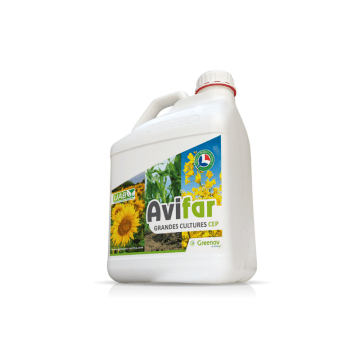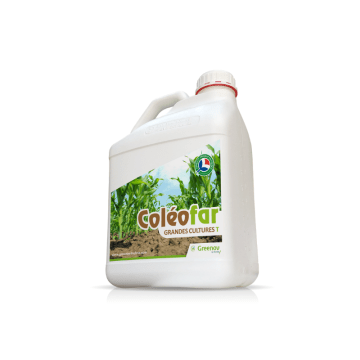Beware: bird damage is affecting an increasing surface area of arable crops each year. With average losses of 120,000 ha per year, corn is the crop most affected by this problem. The nature of the damage and the losses can be severe, particularly given that the control options are limited to methods such as bird scaring. Are there any other ways of limiting the damage caused by these feathered pests?
What are the signs of bird damage in corn crops?
The severity of the damage varies depending on bird numbers and the presence of other food sources in the environment. Crop losses caused by crows and pigeons are often seen in corn.
Damage to corn crops is observed at the time of sowing and emergence on young seedlings, with damage to mature plants being more unusual. For example, birds from the corvidae family pull on the corn seedlings at the 2 to 4-leaves stage. But from the 4/5-leaves stage, there is no seed left.
The damage takes several forms:
- regularly spaced, visible holes of a few centimetres. The birds look for the seeds, following the seed lines and eating the seed,
- attacks on seedlings to reach the seeds.

What factors promote bird attacks on corn fields?
The attractiveness of sites: the sites attractive to birds are usually isolated fields or large, open fields:
- proximity to woodland and/or large trees or large towns. These places serve as nesting sites and places of shelter,
- presence of water, in river valleys for example,
- large isolated fields, or open fields,
- proximity to a landfill site or tip.
Sowing dates: the sowing dates coincide with the presence of chicks in the nest, obliging the adult birds to seek more food. Usually, crops sown at later stages than their neighbouring fields are most attacked. But, depending on the year’s weather, early-sown crops can be just as vulnerable as late-sown crops.
Cultural practices: these practices can also attract birds to a field, particularly if sowing is done soon after tillage, as a result of the presence of worms and insects close to the soil surface. Cloddy soils and the presence of plant residues at the surface are also exacerbating factors.
Bird damage to seed can have an enormous impact. For example, the average cost of sowing one hectare of corn (maize) is €272. If late or postponed re-sowing is required, this also has an impact on crop profitability.
How can the vitality of corn crops be improved in order to help them withstand bird attacks?
At present, no adequate visual or acoustic bird-scaring methods - bangers, scarecrows, balloons or kites - or seed repellent treatments exist capable of effectively limiting bird damage. However, it is possible to fortify plants that are very demanding during their starting period in order to limit the impact of damage. This reinforcement involves optimising the plant’s mineral and water absorption and making the cell walls thicker in order to create an environment unfavourable to bird pests.
Some birds will readily take over a corn field and cause significant damage. Don’t wait for this to happen; stimulating crop growth is an avenue well worth exploring. Contact our experts for more information!
Talk to our experts
Natual is a range of plant-based nutritional supplements designed to support the physiological functions of farm animals and crops, and in particular their natural defences.


